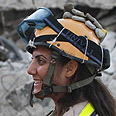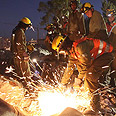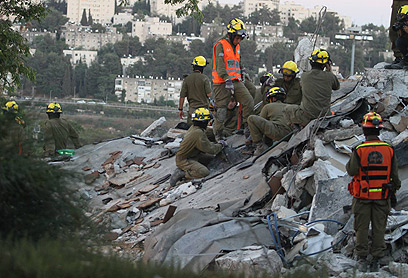
Search and rescue teams
Photo: Gil Yohanan

Soldiers during drill
Photo: Gil Yohanan
The Home Front Command on Tuesday launched a first-of-its-kind exercise simulating evacuation and rescue operations from three different rocket landing sites.
As part of the wide-scale exercise, hundreds of soldiers from the Home Front Command's search and rescue Kedem Battalion simulated evacuation of casualties and removal of debris from several locations simultaneously.
Related stories:
- MI chief: Region more unstable than in past
'We're training like we've never trained before'
Home Front Command to test SMS system
One of the aims of the drill is to practice search and rescue operations in different geographical locations, based on the estimate that rocket salvos will hit different targets that are not necessarily nearby.

First-of-its-kind drill (Photo: Gil Yohanan)
On Tuesday, the exercise will continue, simulating another rocket salvo, this time of unconventional rockets, which will hit the Bat Yam promenade. The "casualties" will be evacuated to the football stadium in Holon.
Lieutenant Colonel Gilad Farhi described the role of the soldiers in the event that rockets with chemical warheads fall on Israel: "One company will clear the poisonous gas, while the second company suppresses the chemical materials and the third decontaminates the vehicles leaving the area."
Jerusalem District Commander Colonel Chen Livni added: "We don't have the luxury of positioning an entire battalion in one rocket landing site."
Asked what is the likelihood that rockets will hit the capital, Livni said: "The claim that they won't fire rockets on Jerusalem because of the Temple Mount doesn't hold water because the enemy has missiles that are accurate enough to only hit the western part of the city.
The drill comes two weeks after the Home Front Command held a nationwide testing of the "Personal Message" alert system, during which hundreds of thousands of citizens received messages on their personal cellular phones.
- Receive Ynetnews updates
directly to your desktop















